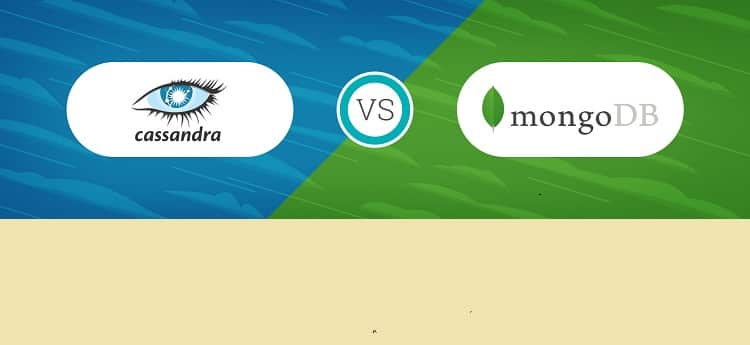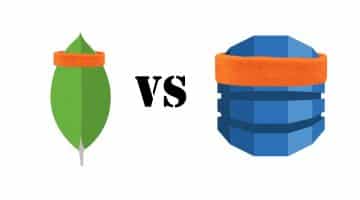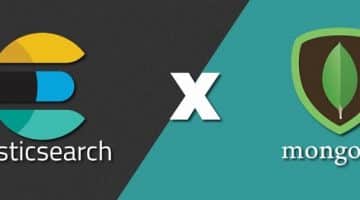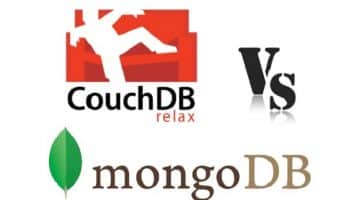NoSQL is the most sought-after technology that development companies are using for storing and managing data in the back-end. When it comes to NoSQL technology, the two names that stand out completely are MongoDB and Cassandra. They are quite similar in some cases but in reality, they are very different from one another. Cassandra was released in 2008 while MongoDB came a year later. Some of the big names using Cassandra as their database system are Facebook, Instagram, Spotify, Netflix, Reddit, and even IBM. As far as MongoDB goes, big fishes like Sony, Twitter, HootSuite, Klout, Citrix and other use it every day smoothly.
Main Differences Between Cassandra Vs MongoDB –
Both the database technologies have the open source distribution, same consistency methods, same partition methods, support for same programming languages, and similar API methods. But MongoDB is written in C++ while Cassandra is written in Java. MongoDB is best when you have to execute more dynamic queries such that the data changes every now and then and you do not want the performance of the database to suffer due to the changes in a big database. Cassandra is best when you need to store huge data that will mostly stay static such as analytics, logs, and likewise.
Structural Difference – MongoDB stored all data in documents like a package. Cassandra has the modernized flexible column structure for data storage. Cassandra offers a simple interface for replicating effortlessly. But MongoDB’s inbuilt replication is quite complex and you may need assistance from experts to set it up perfectly. As far as the syntaxes go, Cassandra uses CQL which is very similar to SQL. If you know SQL, Cassandra will be a cakewalk. On the other hand, you have to learn a new query language if you want to master MongoDB.
The structure of Cassandra is tailor-made for a rapid growth of the database and the scalability is reliable and requires minimal intervention. As a matter of fact, deployment in multiple servers needs minimal configurations changes. In simple words, you can set up and maintain Cassandra database easily irrespective of how big the dataset is. MongoDB is suitable for real-time analytics storage with caching techniques. They are nearly having a monopoly in mobile apps, IoT, and content management.
Performance – When it comes to Cassandra, the peer to peer architecture makes the read time less than MongoDB. As a matter of fact, the low fault tolerance of MongoDB is the reason for the high read time and in case of a huge database, this slowing down affects the performance of the application considerably. But if the size of the database is relatively small, the performance is going to be better than Cassandra because it is having full index support.
Data Handling – Cassandra is designed to handle unstructured data. Well, it handles 80 million Instagram users’ photos and that is enough to showcase how it can handle the biggest ones easily. It uses the unique combination of tabular as well as key-value structure for storage. It does not use any of the strong features of RDBMS instead it modifies them for betterment. For example, it makes it possible for users to create tables and modify them even when the database is running and processing other queries. The tables are referred to as table family. The weirdest part is that the rows can have different columns as per requirement which is a clear-cut breakage of traditional RDBMS. It is truly a non-relational database system.
MongoDB has retained several key features of RDBMS even though it has JSON based document structure for data handling. It is completely schema-free and that is why you can create a document or table without defining the structure first. It is having a document in place of the table, key in place of column and collection in place of records. You can modify documents, add fields and even delete them but you do not have to restructure that document entirely. That is where it surpasses the traditional RDBMS for better.
Support – As far as the community activeness goes, both of them are vibrant and there are loads of resources and active professionals to help you out and address the issues immediately. Cassandra’s documentation is maintained by Apache Software foundation while MongoDB is maintained by MongoDB Inc. Coming to the most important part of customer support, Cassandra has employed third-party companies like Datastax, Impetus, and others to help out the customers immediately. MongoDB has in-house customer support which is perceived to be more effective and they are available 24/7 for customers who have opted for enterprise-grade. You can upgrade to new version, fix bugs and get continuous security updates.
The best part is that if you have Cassandra and MongoDB for the same application’s different modules and you can connect Cassandra and MongoDB seamless using Panoply so that you can access all the data in one place.




